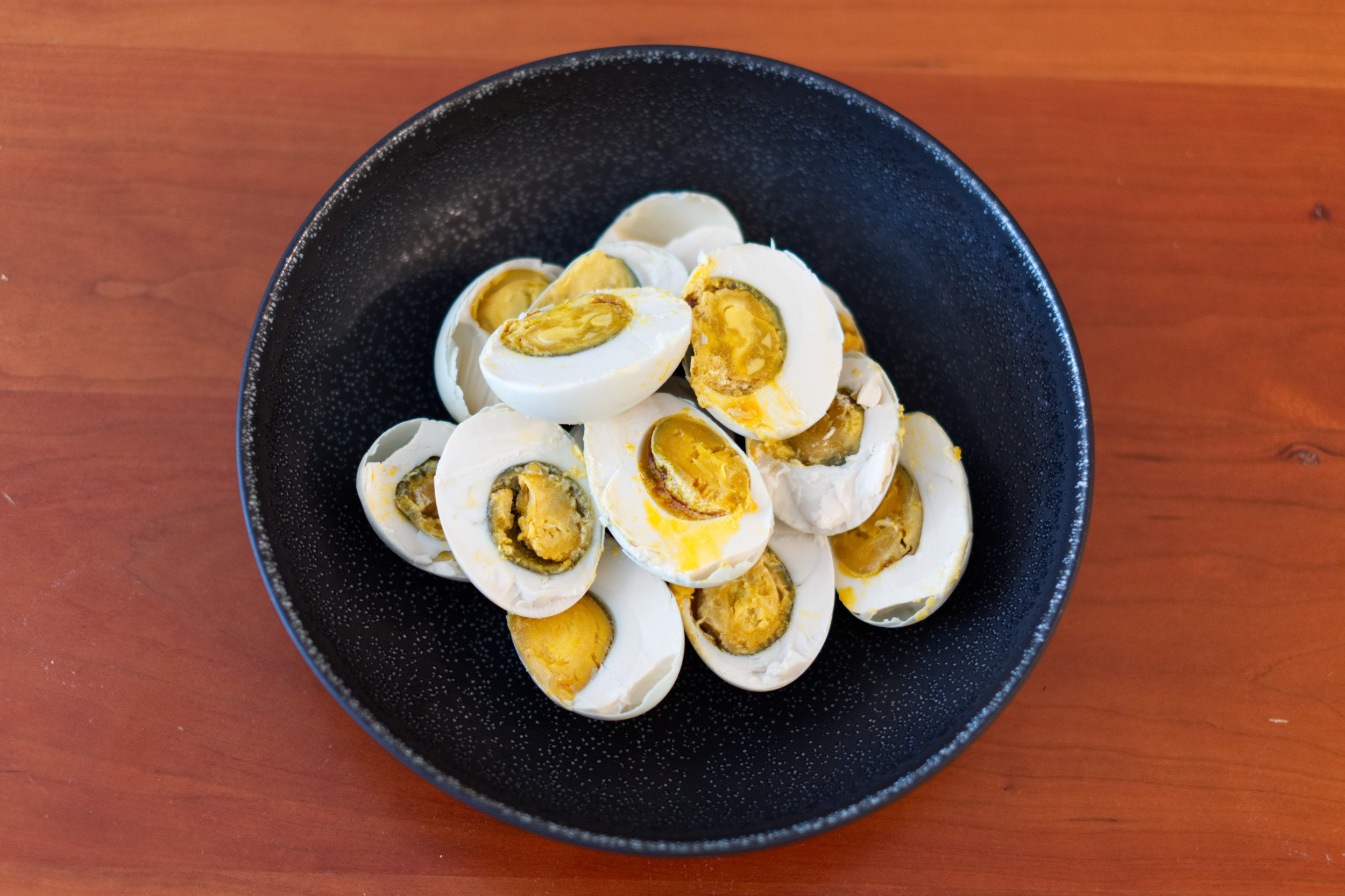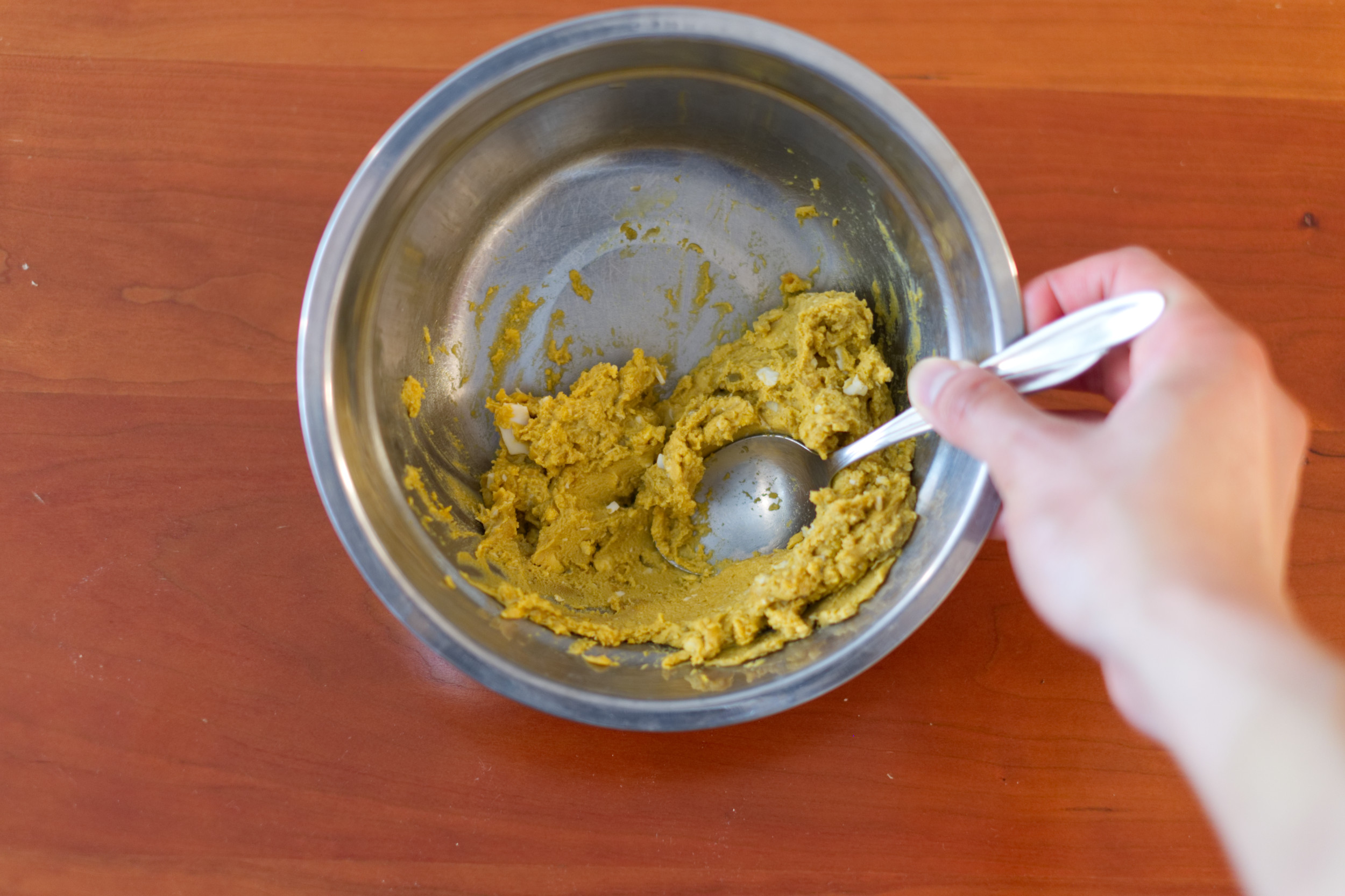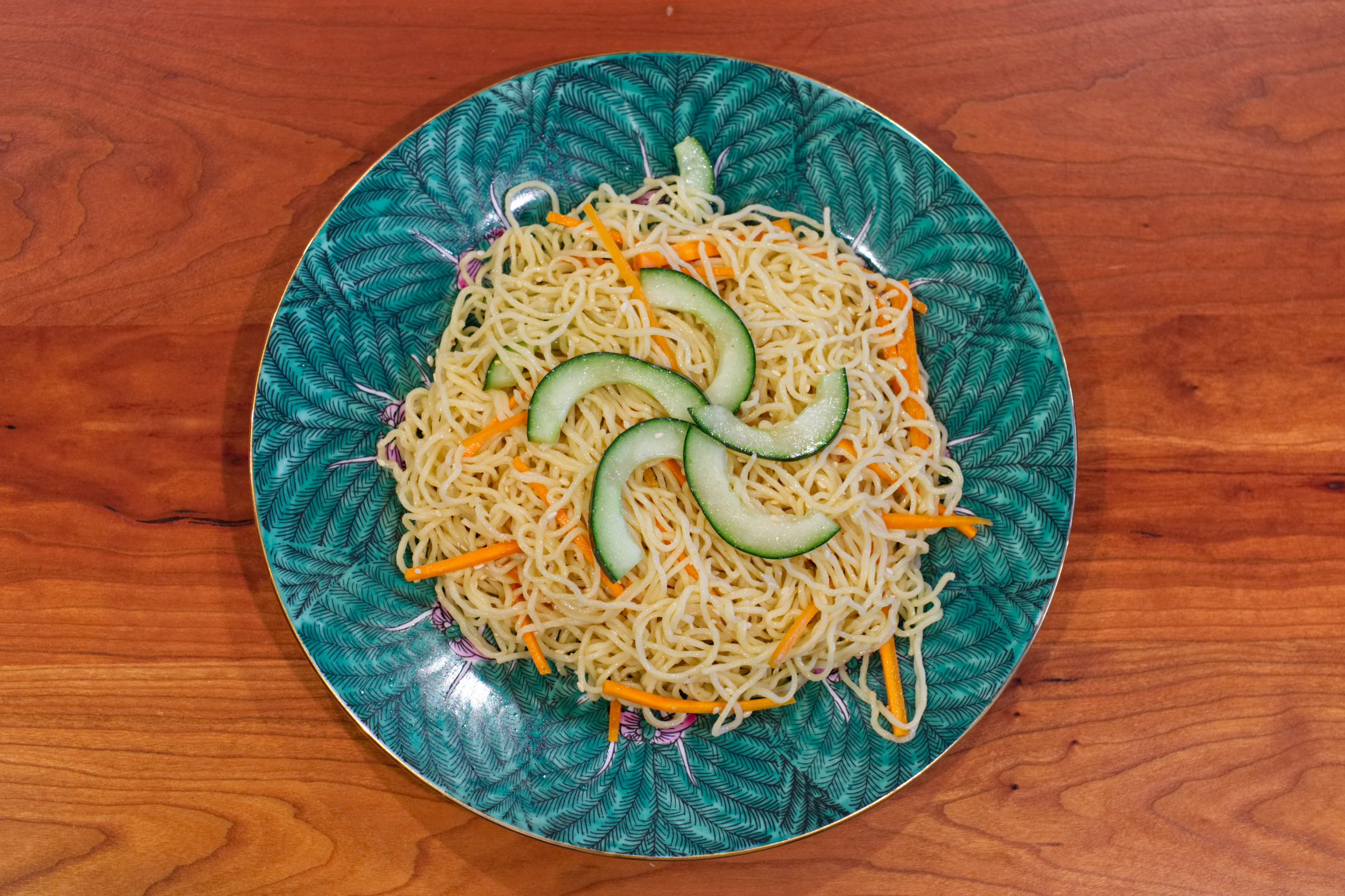Salted Yolk Noodles 鹹蛋黄面 Haam Daan Wong Min - Version 1

When I make noodles for breakfast, and this includes instant noodles, I sometimes like to have a salted duck egg with it. I love the rich taste and texture of salted egg yolks. One time I was eating one of these typical breakfasts and savoring the yolk. I noticed how it sort of dissolved on my tongue and thought if it’s possible to incorporate the yolks into noodle broth as well. Turns out it does dissolve into the broth!
I tried Googling around the internet a little and I couldn’t find that this was done yet to my surprise! Or at least in America. So, I thought that this would be a good opportunity to try making a new recipe from scratch combining Chinese and Japanese flavors and techniques as well. I normally keep a bag in my freezer of chicken skin and bones to make stock and went with this as my starting point. Besides, chicken and yolk is a natural pairing. I figured I would try a slightly altered version of dashi using dried flounder instead of katsuobushi. Traditionally, dried flounder is used in the stock for won ton noodles.
I definitely want to come back and keep working on new versions of this. Any of my Asian friends, especially Chinese ones, will know about these salted duck eggs and we all know how good they are. I don’t think I’ve met an Asian person that doesn’t like them. It’s 2019 and in America, I think that only an Asian perspective can make up this sort of recipe. With our comfort and familiarity with these salted eggs, I don’t think there’s any impulse to try and rework the salted eggs altogether to “elevate” or “refine” them. They're not expensive and perfectly fine as they are.
I think the next time I try this I would go in the direction of a white stock and maybe doing the Chinese technique of using meat to clarify a stock. Roasting the bones, skin, and veggies gives a nice depth, but it seems like the flounder gets lost in it.
If you’re feeling super lazy and want to have something like this, just make whatever favorite instant noodles you like and mash up one or two egg yolks and dissolve it into the broth. Just don’t blame me for a spike in your cholesterol levels from over-indulgence from this noodle upgrade.
Recipe:
2 1/2 lbs of chicken bones and skin
1/2 lb carrots (about 3 medium sized ones), cut into 1 inch pieces
1/4 lb scallions (1 bunch)
2 oz dried flounder (3 flounders)
kombu (about 14 in. by 8 in. in size)
16 salted duck egg yolks
4 tbsp mirin
6 tbsp + 2 tsp shiro shoyu
1 tbsp shoyu
Salt, to taste
In small batches on a cast iron skillet, sear the chicken bones and skin over medium high heat for a few minutes at a time until skin turns brown on both sides. Transfer the bone and skins to a pressure cooker and work in batches. (I do this rather than a high temperature oven such as 450F because I’m working with a small enough batch.) Keep the fat in the pan and sear the carrots and scallions in it. Transfer everything into the pressure cooker and add 2 quarts of water to cover.
Bring the pressure cooker to heat until it’s pressurized and let it cook for 45 minutes. Run cold water over the top of the pressure cooker to depressure (you will hear hissing sound as it depressure) and strain out the stock. Let the stock cool to room temperature before putting it in the fridge overnight. The fat will be easier to scoop out after it is chilled and any other large impurities will settle to the bottom. Pour out just the stock and discard any left with large impurities. You should have about 1 1/2 quarts of stock.
Tear the dried flounder into smaller pieces and add it to a blender. Blend to tear the dried flounder so it will be finely shredded and this should only take a few seconds on the high setting.
In a large pot, add the stock and 2 1/2 quarts of water so you have about 4 quarts of stock. Rinse the kombu sheet and add it to the stock and bring it to a boil over high heat. Boil for 1 minute and remove the kombu. Then reduce the heat to a simmer and add the shredded dried flounder. Simmer for 15 minutes.
Meanwhile, peel 16 salted duck eggs and reserve the egg yolks. It is okay to leave some pieces of egg whites, but don’t leave too much in the mixture. With the back of a spoon, smash the egg yolks so it is creamy in texture.
In the last 5 minutes of simmering the dried flounder, add the paste of salted egg yolks. Stir with a spatula and you may need to smash pieces of the yolk paste to the side of the pot to help dissolve it. It also helps to have a small strainer periodically scoop up the yolk pieces and use the spatula to press and help dissolve some more yolks. When it seems like most of the yolks are dissolved, strain the stock one last time.
Clean out the pot, and add the stock back to it. Bring the stock to a simmer and add the mirin, shiro shoyu, shoyu, and salt to taste. Reserve for use. It will quickly separate with a yolk sediment at the bottom, mostly stock in the center layer and fat at the top. Each time you heat up the stock, just before serving, make sure to stir the stock so you get a little of everything.
The way I made mine was with Lanzhou noodles. After the noodles are boiled, rinse them to remove excess starch and put them in a bowl. Add hot salted yolk broth and top with sliced yellow chives.









